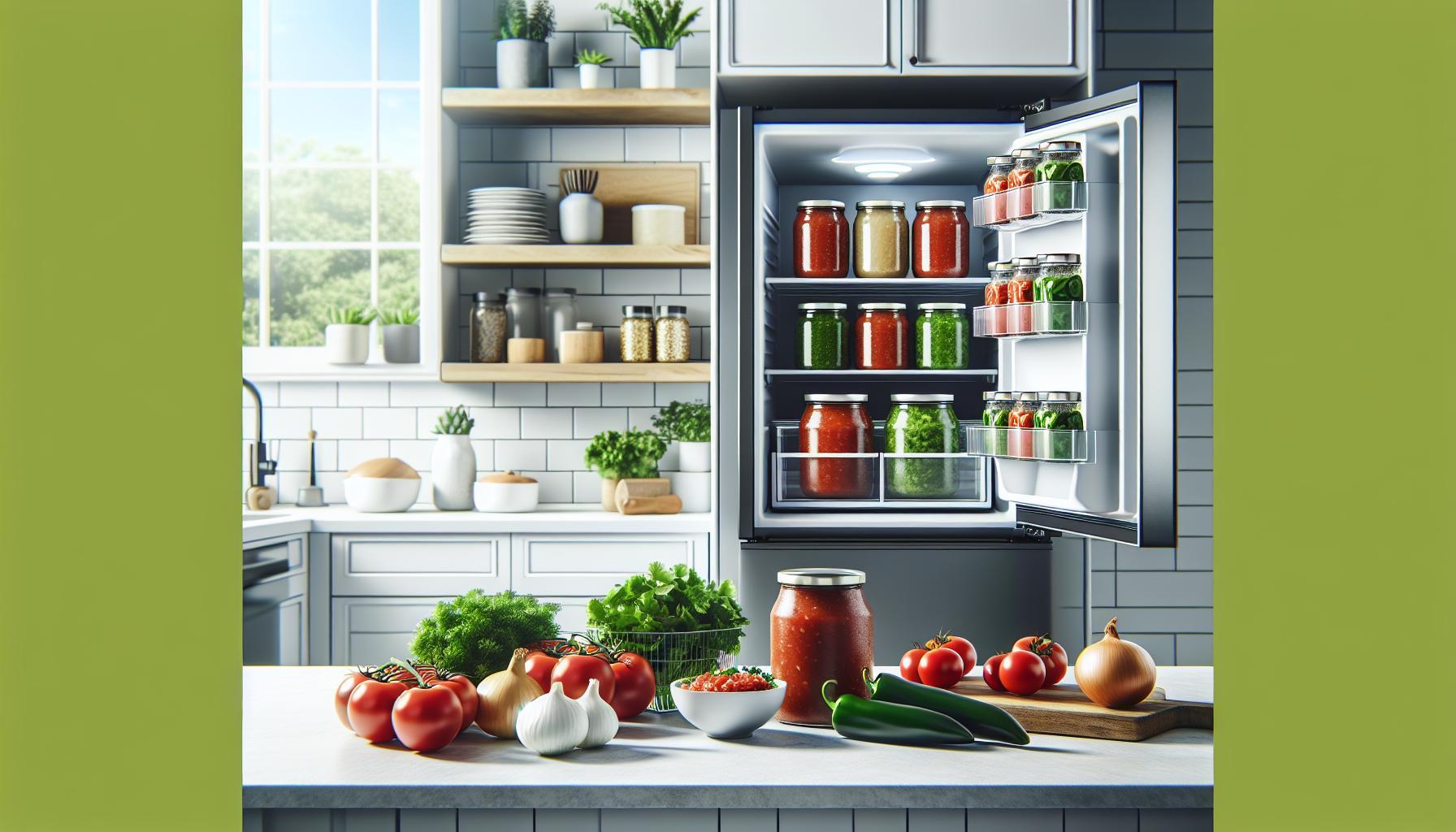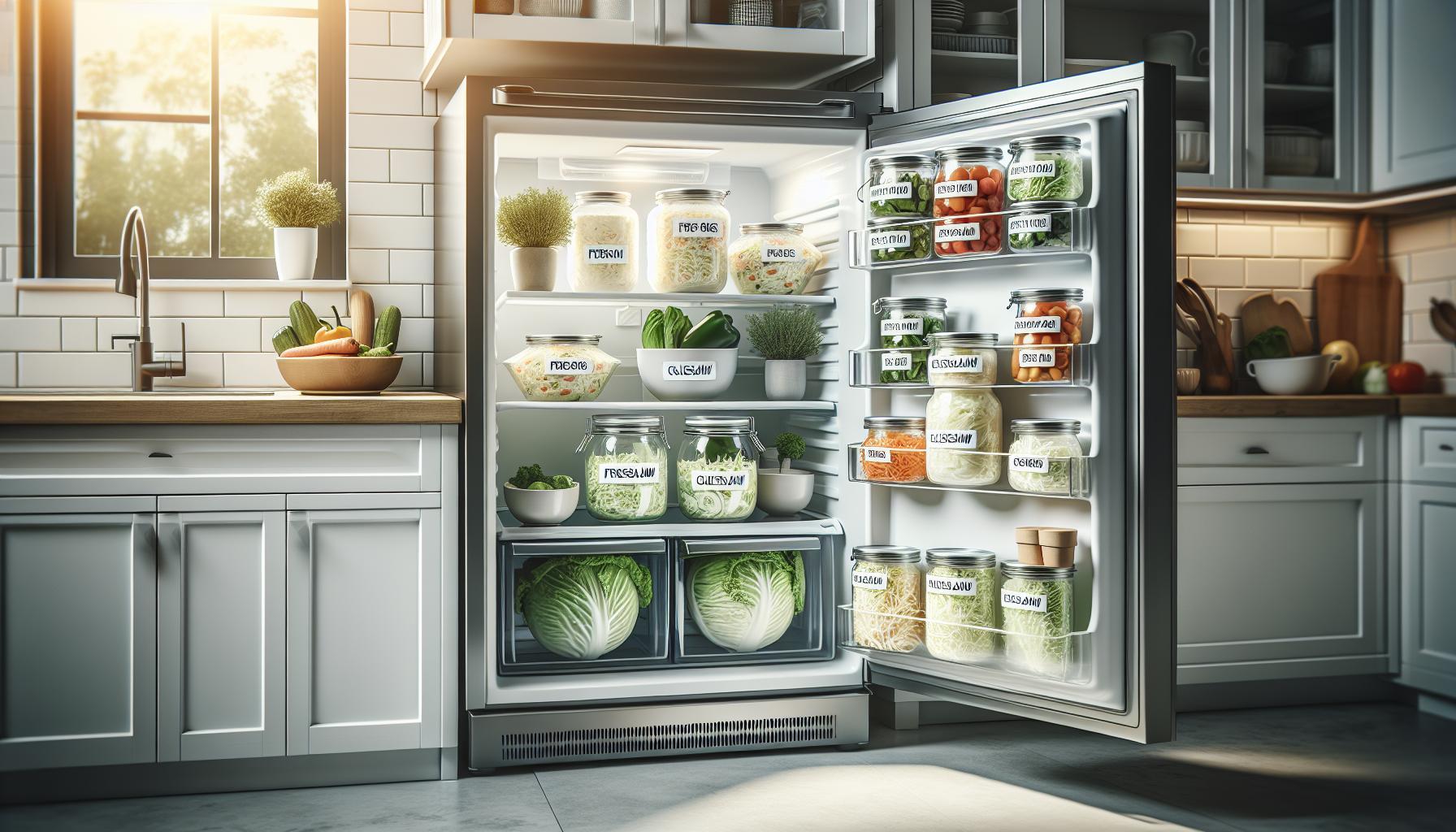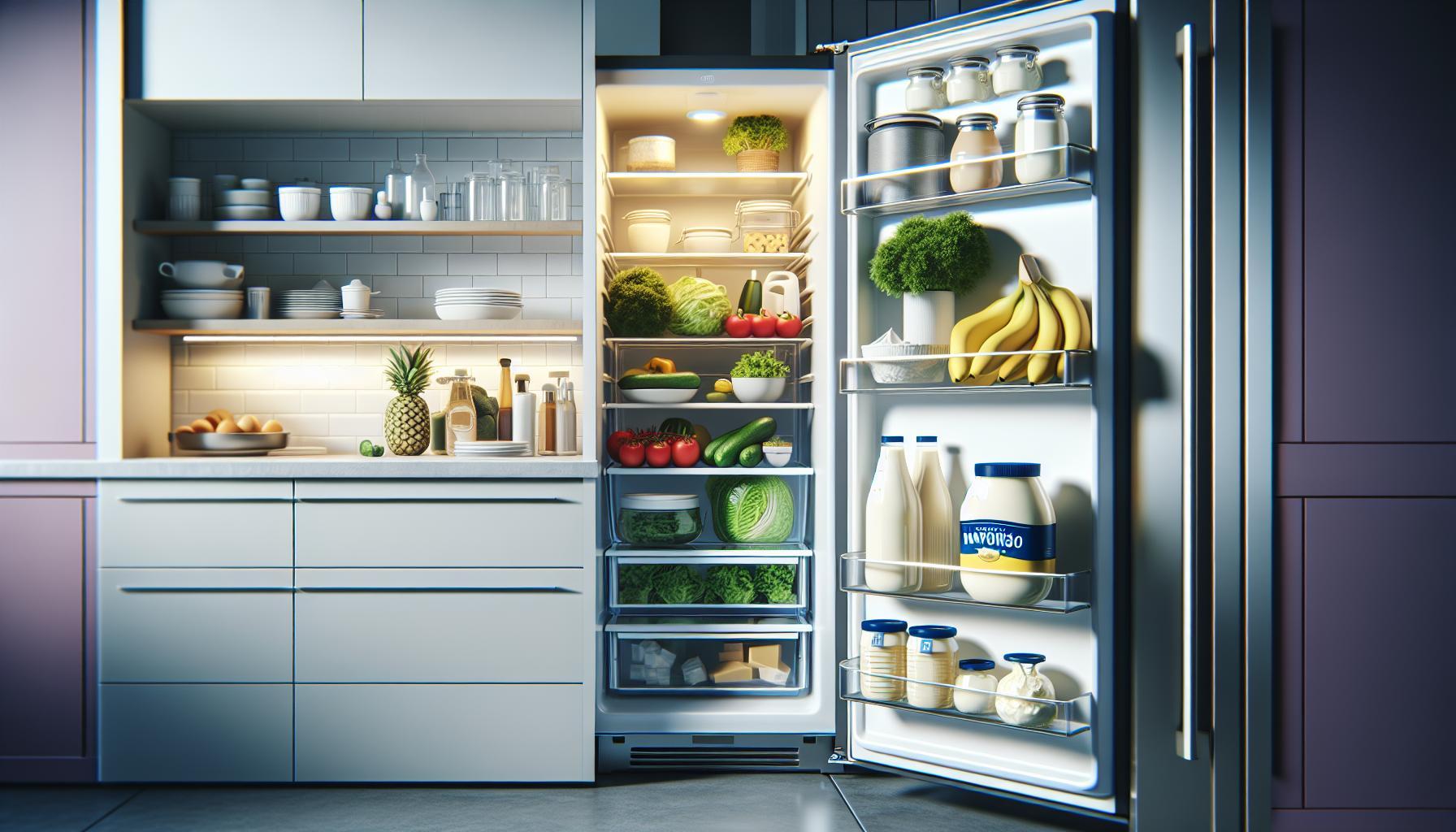Homemade salsa is a beloved staple in many kitchens, often celebrated for its fresh flavors and vibrant ingredients. However, understanding how long this zesty condiment lasts in the fridge is crucial for food safety and enjoyment. Proper storage not only keeps your salsa tasting fresh but also prevents foodborne illnesses that can arise from spoiled ingredients.
Many cooks wonder, “How long can I keep my salsa?” This question is important, especially for those who enjoy making large batches for gatherings or meal prep. By learning the optimal storage practices and shelf life of homemade salsa, you can ensure that every scoop is as delicious as the first-keeping your culinary adventures vibrant and worry-free. Dive into the specifics to discover how to savor your salsa longer while maintaining its delightful taste and safety.
How Long Can Homemade Salsa Last?
Homemade salsa is a delicious way to enhance your meals, but understanding how long it lasts in the fridge is essential for both safety and flavor. Typically, homemade salsa can stay fresh for about 4 to 7 days when stored properly in the refrigerator. This timeframe can be influenced by the ingredients used; fresh vegetables may spoil faster than a salsa that contains vinegar or other preservatives.
To maximize the shelf life of your salsa, always store it in an airtight container. This prevents exposure to air and reduces the risk of contamination. Be sure to keep it in the coldest part of your fridge, away from the door, where temperatures fluctuate more. If you’ve prepared a large batch, consider portioning your salsa into smaller containers. This way, each time you open a container, you limit the exposure of the rest to air and bacteria, keeping it fresher for longer.
If you need to store your salsa for an extended period, freezing is an option, although it may alter the texture. Properly sealed in a freezer-safe container, salsa can last up to 2 to 3 months in the freezer. When you’re ready to use it, thaw it in the refrigerator and consume it within a week for the best quality and taste.
Remember, the freshness of homemade salsa is not only about flavor; it’s also about safety. Always perform a quick visual and smell check before using salsa that has been stored for several days. If you notice off odors, discoloration, or mold, it’s best to err on the side of caution and dispose of it. Keeping track of storage times and conditions can help ensure your homemade salsa remains a vibrant, tasty addition to your culinary repertoire.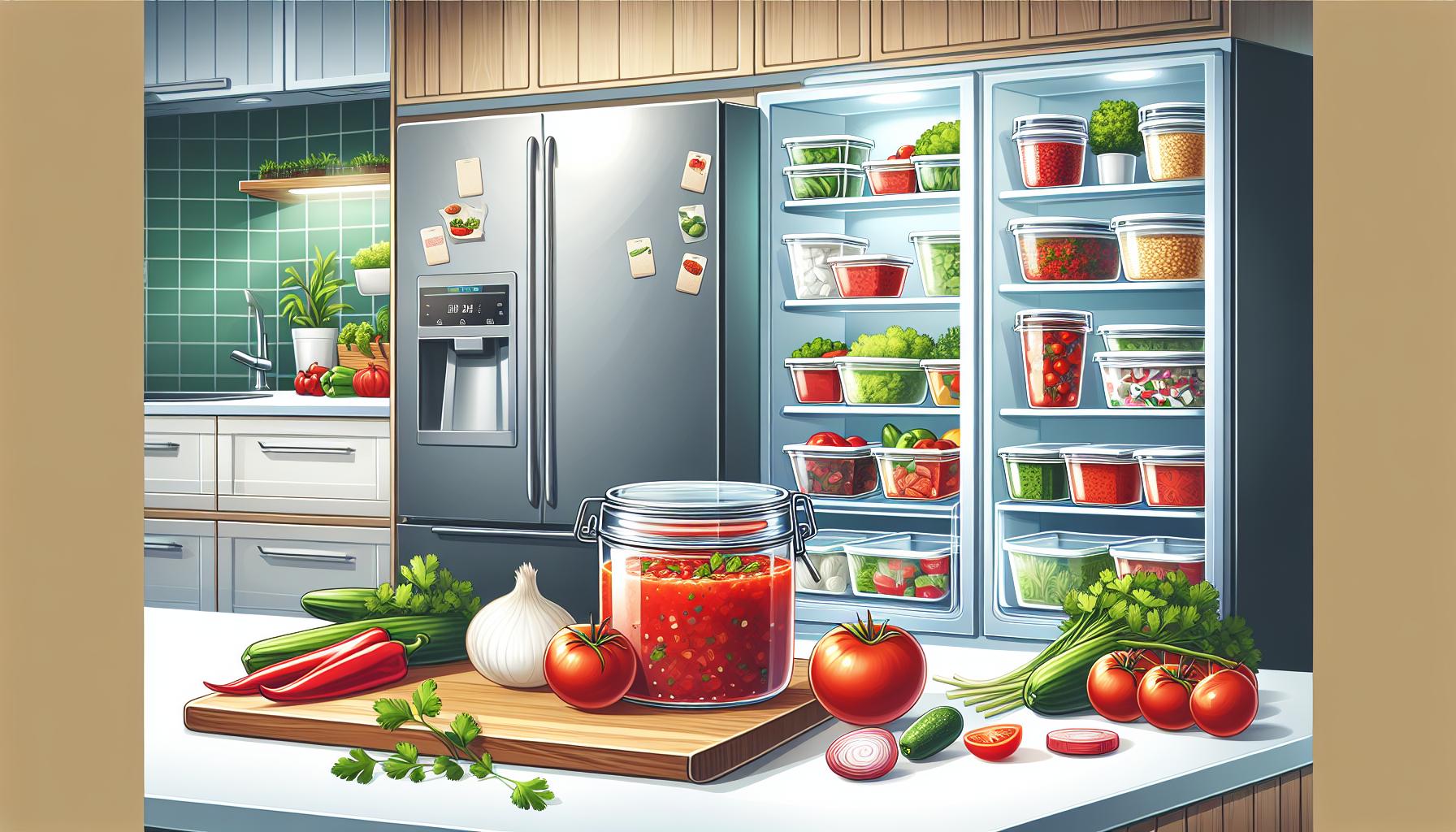
The Best Storage Tips for Homemade Salsa
To ensure your homemade salsa stays fresh and zesty for as long as possible, implementing a few simple storage strategies can make all the difference. One of the most critical aspects of storing salsa is to use airtight containers. This prevents air exposure, which can lead to oxidation and spoilage, prolonging the life of your delicious creation. Glass jars with tight-fitting lids or high-quality plastic containers are excellent choices.
For optimal storage, always locate your salsa in the coldest section of your refrigerator, typically towards the back. Avoid placing it in the door where temperatures fluctuate frequently. Additionally, if you’ve made a larger batch, consider divvying it up into smaller containers. This way, every time you open a jar, you limit the exposure of the entire batch to air and bacteria.
It’s wise to keep an eye on the ingredient composition as well. Salsas loaded with fresh tomatoes and herbs might have a shorter shelf life compared to those with vinegar or cooked elements. In general, aim to consume homemade salsa within 4 to 7 days for the best quality. To extend the freshness, always use clean utensils when serving to avoid introducing contaminants. This will help maintain the flavor and safety of your salsa for longer periods.
Lastly, if you plan to keep your salsa for an extended time, freezing is a viable option. Just ensure it’s sealed well in a freezer-safe container to prevent freezer burn, allowing it to maintain its quality for up to 2 to 3 months. When ready to use, thaw the salsa in the refrigerator and consume it within a week for the best taste and safety.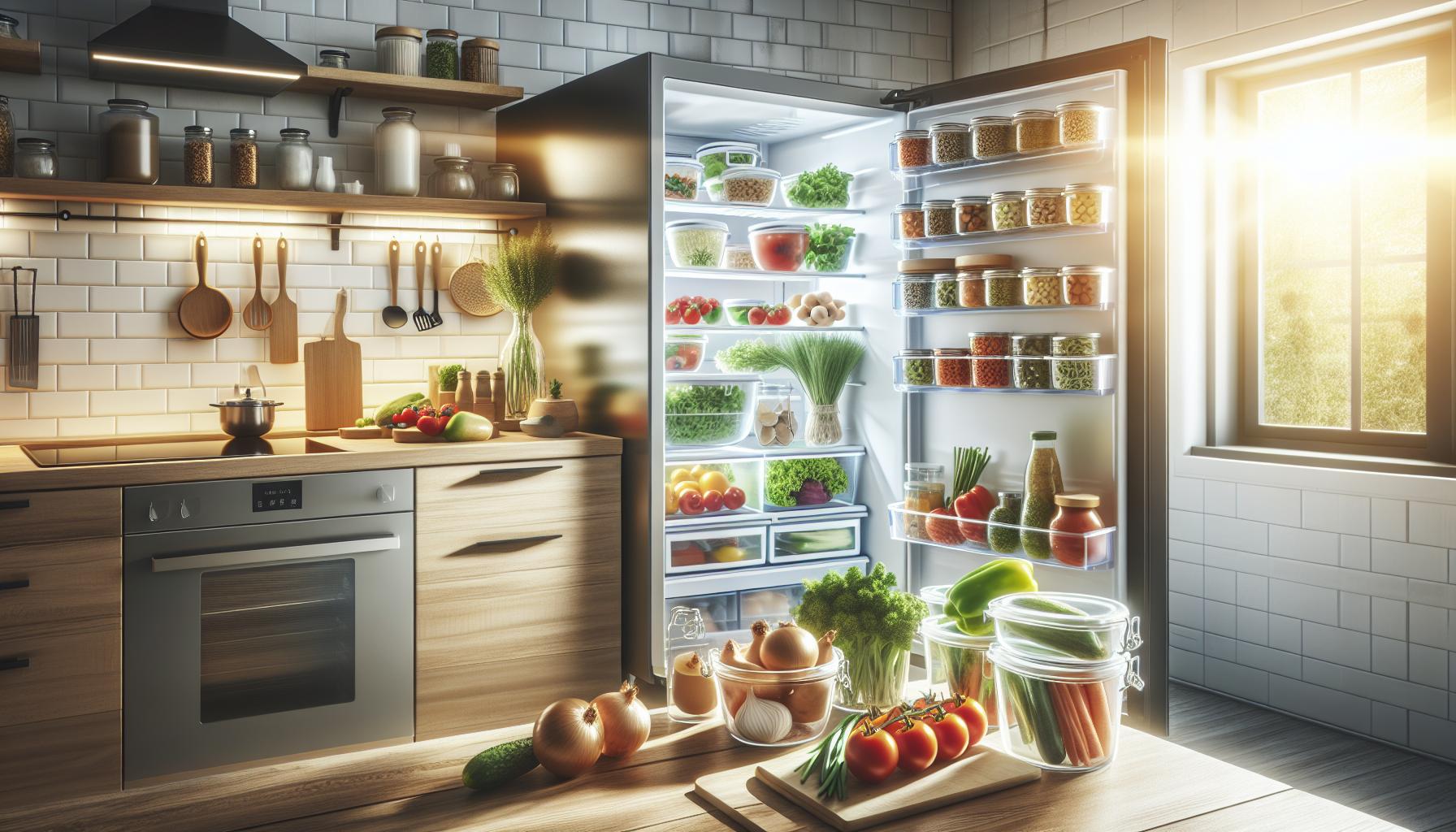
Signs Your Salsa Has Gone Bad
Homemade salsa can be a delicious addition to many meals, but knowing when it’s no longer safe to eat is crucial. One of the most common indicators is a change in color or texture. If you notice that your salsa has darkened or appears to have a watery separation, it may be best to discard it. A vibrant salsa should retain its fresh appearance; any dullness or discoloration is a signal that it may be past its prime.
Another important sign to watch for is smell. Fresh salsa should have a bright, zesty aroma with a hint of the ingredients used, such as tomatoes and cilantro. If your salsa emits a sour, off, or unpleasant odor, it’s likely a sign that bacteria have started to grow. Trust your senses; if it smells wrong, it’s better to play it safe and throw it out.
Taste can also be a helpful indicator, though it’s advisable to rely on other senses as a first measure. If the flavor seems unusually off or has developed a bitterness that wasn’t present initially, that’s another indication that your salsa has spoiled. And remember, while a small taste may help confirm freshness, don’t consume enough to risk illness.
For safety, always adhere to the guideline of consuming homemade salsa within 4 to 7 days after preparation. If you have any doubts about its freshness based on the visual, olfactory, or taste checks, it’s best to err on the side of caution and dispose of it. Ensuring food safety not only protects your health but also enhances your culinary experiences.
Freezing Salsa: Is It a Good Idea?
Freezing homemade salsa can be a practical solution for extending its life and maintaining that delicious, zesty flavor. Properly frozen salsa can last up to six months without significant loss in taste or texture, allowing you to enjoy the vibrant flavors of summer year-round. However, to ensure the best results, there are some key steps and considerations to keep in mind.
Firstly, the texture of salsa may change after freezing. When you defrost salsa, it can become a bit more watery due to the separation of ingredients. To mitigate this, consider adjusting your salsa recipe slightly before freezing. For instance, using less watery vegetables, such as tomatoes, or incorporating ingredients that freeze well, like corn or bell peppers, can help maintain a desirable texture. Additionally, always allow the salsa to cool completely before transferring it to a freezer-safe container.
For optimal storage, choose airtight containers or heavy-duty freezer bags. When using bags, remove as much air as possible before sealing to prevent freezer burn, which can negatively impact flavor and quality. Label each container with the date so you can easily keep track of how long it’s been in the freezer.
When it’s time to enjoy your frozen salsa, transfer it to the refrigerator to thaw overnight before serving. This gentle defrosting process helps retain more of the original flavor and texture. If you’re in a hurry, you can also defrost it in the microwave using a low-power setting, stirring occasionally. However, avoid leaving it at room temperature for too long to prevent bacterial growth.
With these tips in mind, freezing homemade salsa can be an excellent way to keep your meals colorful and tasty, extending the life of a beloved condiment while ensuring safety and flavor integrity.
How to Extend the Freshness of Salsa
To keep your homemade salsa fresh and delicious for as long as possible, a few smart practices can make a significant difference. Salsa is a vibrant blend of ingredients that can vary in shelf life depending on its components and storage conditions. By understanding and implementing these guidelines, you can enjoy that zesty flavor without worrying about spoilage.
Start with an airtight container. Proper sealing prevents air exposure, which can lead to oxidation and spoilage. Glass jars with tight lids or plastic containers labeled as BPA-free are excellent choices. Another method is to store salsa in smaller portions; this way, you only expose the amount you need to air when serving, keeping the remainder fresh for longer. Remember to always use a clean spoon to scoop salsa to avoid introducing bacteria.
Additionally, refrigeration plays a crucial role in maintaining salsa’s freshness. Always store your homemade salsa in the fridge right after preparation. Homemade salsa typically lasts about 4 to 7 days in the refrigerator, depending on the ingredients used. If your recipe contains more acidic components, such as lime juice or vinegar, these can help extend shelf life due to their preservative qualities.
To really extend its freshness, consider factors such as ingredient choices and adjustments. Ingredients like onions and tomatoes can cause salsa to spoil more quickly. For longer-lasting options, incorporate more vinegar or use less fresh produce when preparing your salsa. You might even explore variations like roasted salsas, which can have a different stability profile due to their cooking process.
Lastly, always keep an eye (and nose) out for signs of spoilage. If your salsa develops an off smell, changes in color, or shows signs of mold, it’s time to discard it. Following these practices can help ensure you enjoy your salsa at its best for longer, making your gatherings and meals even more delightful.
Ingredient Impact on Salsa Shelf Life
The ingredients you choose for your homemade salsa play a significant role in determining how long it will last in the fridge. Certain components, particularly fresh produce, can begin to break down more quickly, while others might enhance shelf stability. Understanding this dynamic can help you craft salsas that stay fresh and flavorful longer.
Fresh tomatoes, a staple in many salsa recipes, are packed with moisture, which can promote faster spoilage. To mitigate this, consider opting for firmer varieties, like Roma tomatoes, which have a lower water content and can hold up better in a mixed salsa. Additionally, the amount of onions you include can affect shelf life: while they add great flavor, they also produce enzymes that can lead to quicker spoilage. Using milder onions, such as green onions or scallions, may offer a slightly longer shelf life compared to their stronger counterparts.
Acidic ingredients are your friends when it comes to preservation. The addition of lime juice, vinegar, or other acidic elements not only contributes to the flavor but also creates an environment that is less hospitable to bacteria. For optimal longevity, aim to increase the acidity by adding more lime juice or vinegar; this can extend your salsa’s freshness up to a week or more in the refrigerator. Conversely, avoid overly sweet or rich additions like ripe mango or avocados, which can degrade quicker and make your salsa spoil faster.
Here’s a quick guide to how specific ingredients impact shelf life:
| Ingredient | Impact on Shelf Life |
|---|---|
| Tomatoes | Higher moisture can lead to faster spoilage |
| Onions | Can introduce enzymes that speed up decay |
| Cilantro | Fresh herbs can wilt quickly; consider adding just before serving |
| Acidic ingredients (lime juice, vinegar) | Help preserve salsa, extending freshness by several days |
| Fruits (e.g., mango, avocado) | Can cause salsa to spoil faster due to high fat and moisture content |
By carefully selecting your ingredients and manipulating their ratios, you can not only optimize the flavor of your salsa but also enhance its longevity, ensuring that it remains a delicious addition to your meals throughout the week.
Using Vinegar for Longer Shelf Life
Adding vinegar to your homemade salsa isn’t just a way to enhance its flavor; it also significantly boosts its longevity. This powerful acid helps create an inhospitable environment for bacteria and molds, meaning your salsa can stay fresh for an extended period in the refrigerator. When you think about food safety and freshness, incorporating vinegar becomes not only a practical choice but also a smart culinary strategy.
Vinegar is a versatile ingredient, with options ranging from white and apple cider to red wine and balsamic. Each type brings its unique flavor profile, so you can tailor the taste of your salsa while improving its shelf life. For instance, apple cider vinegar adds a slight fruitiness, while red wine vinegar offers a robust depth of flavor. Aim for about 1 to 2 tablespoons of vinegar per pint of salsa, adjusting to your taste preferences. This acidity not only helps preserve but can also create a delightful tang that enhances the overall taste experience.
Storage Tips When Using Vinegar
To maximize the benefits of vinegar in your salsa, consider these key storage tips:
- Refrigeration is Key: Always store your vinegar-infused salsa in the fridge to maintain its freshness. It can typically last up to two weeks when properly stored.
- Sealed Containers: Use airtight containers to prevent exposure to air, which can cause spoilage. Glass jars with tight-fitting lids are ideal.
- Batch Prep Tips: If you’re making a larger batch, consider portioning it out. This way, you only open one container at a time, minimizing exposure to air and bacteria.
Ultimately, by incorporating vinegar into your salsa recipes, you enhance not only the flavor but also the safety and shelf life of your dish. This simple ingredient serves as a guardian of freshness, giving you the freedom to enjoy your homemade salsa longer without compromising on taste or safety.
Refrigeration Best Practices for Salsa
Storing your homemade salsa properly can mean the difference between enjoying its vibrant flavors for weeks versus tossing it out after a few days. Homemade salsa, especially when made with fresh ingredients, is perishable and therefore requires strict adherence to refrigeration practices to stay safe and tasty. When kept in an airtight container in the fridge, salsa can typically last up to two weeks, but certain guidelines enhance this shelf life significantly.
To get the most out of your salsa, it’s crucial to follow these best practices for refrigeration. Firstly, always store salsa in airtight containers. This prevents air exposure, which can lead to spoilage and degradation of flavor over time. Opt for glass jars or plastic containers that seal tightly. Secondly, ensure that your refrigerator is set at or below 40°F (4°C); this temperature is ideal for slowing bacterial growth. Keeping your salsa on a middle shelf rather than in the door, where temperatures fluctuate more, can also help maintain consistent coolness.
Consider implementing a “first in, first out” strategy if you tend to make large batches of salsa. Label your containers with the date you made them, so you can keep track of how long they’ve been stored. If you’re concerned about keeping salsa fresh for longer periods, try to limit the number of times you open each container, as exposure to air and contamination can invite bacteria. By following these guidelines, you can maximize the freshness and safety of your homemade salsa, ensuring it remains a delightful and zesty addition to your meals for days to come.
Storing Salsa in Different Containers
Choosing the right container for storing salsa is pivotal to ensuring it remains fresh and flavorful. The type of container not only affects the salsa’s longevity but also minimizes exposure to air and potential contaminants, which can lead to spoilage. Various storage options take on different characteristics, so understanding their benefits can help you preserve your homemade creation longer.
Ideal Container Types
For short-term storage, opt for airtight glass jars or plastic containers with tight-sealing lids. Glass is non-reactive, which prevents any chemical leaching that might alter the salsa’s flavor. Additionally, clear glass allows you to easily monitor the contents for any signs of spoilage. On the other hand, high-quality plastic containers can be lighter and more convenient, especially for outings and events. Ensure these containers are labeled as food-safe and BPA-free.
If you’re looking at longer storage solutions, consider vacuum-sealing salsa in a special bag designed for sous vide cooking or vacuum sealers. This method removes air entirely, drastically slowing down oxidation and bacteria growth. Vacuum-sealed salsa can last up to six months in the freezer, making it an excellent option for meal prep enthusiasts.
Portion Control and Accessibility
When storing salsa, think about portioning it out in smaller containers. This practice minimizes the number of times the entire batch is opened, reducing exposure to air and bacteria. For instance, if you make a large batch of salsa, consider dividing it into half-cup servings. This way, you can easily pull out just what you need, while the rest stays sealed and fresh in the fridge.
In addition to size and sealing capability, remember to store your salsa in the main section of your refrigerator rather than the door. With temperatures in the door fluctuating more when opened, the middle shelves maintain a more consistent environment, ideal for preserving perishable items like salsa.
By selecting appropriate containers and practicing portion control, you can significantly extend the shelf life of your homemade salsa, ensuring that each serving remains as tasty and zesty as the first!
Salsa Varieties and Their Longevity
Different types of salsa vary widely in their ingredients and moisture content, which directly impacts their longevity in the fridge. Generally, homemade salsa can last anywhere from 5 to 7 days when stored properly in an airtight container. However, various salsa varieties have different shelf lives:
- Pico de Gallo: A fresh salsa made primarily from diced tomatoes, onions, cilantro, lime juice, and jalapeños, pico de gallo typically lasts about 3 to 5 days due to its high moisture content and fresh ingredients.
- Chunky Salsas: Salsas that include larger pieces of vegetables or fruits tend to spoil faster because they contain more air pockets and less acidity. These salsas may be best consumed within 4 to 6 days.
- Pureed Salsas: These smooth blends often have a longer shelf life, lasting up to 7 days since they tend to have a more uniform consistency that limits air exposure.
- Cooked Salsas: Varieties that are cooked, such as roasted salsa, can last up to 2 weeks in the fridge. The cooking process helps to eliminate bacteria and adds acidity, which acts as a preservative.
- Fruit-based Salsas: Salsas that incorporate fruits such as mango or pineapple may only last 3 to 7 days, depending on how ripe the fruit was when prepared.
To maximize freshness, it’s essential to avoid cross-contamination. Always use clean utensils when serving salsa, and keep containers sealed tight when not in use. If you notice any signs of spoilage-off smells, discoloration, or mold-it’s best to err on the side of caution and discard the salsa. Understanding these variances can help you enjoy your salsa at its best quality while ensuring food safety in your kitchen.
Safe Salsa Consumption Guidelines
To ensure that your homemade salsa remains safe and enjoyable, it’s crucial to adhere to specific consumption guidelines that prioritize food safety. One significant point to remember is that once opened or prepared, salsa should not be left at room temperature for more than two hours, as this creates an environment conducive to bacterial growth. If the temperature is above 90°F (32°C), reduce this time to just one hour.
Using clean utensils when serving salsa can significantly reduce the risk of contamination. Avoid dipping chips or other items directly into the salsa jar, and instead, serve individual portions. This practice helps to keep the salsa fresh longer. If you’re storing leftover salsa, transfer it to a clean, airtight container to minimize exposure to air, which can accelerate spoilage.
Signs of Spoilage
It’s essential to check for signs of spoilage before consuming salsa. Look for the following indicators:
- Off Smells: An unpleasant or sour odor can signify that the salsa has spoiled.
- Discoloration: If the salsa has changed color or has developed dark spots, it’s best to discard it.
- Mold Growth: Any visible mold indicates spoilage, and the salsa should be thrown away immediately.
If you’re unsure about the freshness of your salsa, it’s safer to err on the side of caution. Even if the salsa appears fine, if it’s been stored for longer than the recommended duration, it’s wise to discard it to prevent foodborne illness.
By following these guidelines, you can enjoy your salsa while minimizing the risks associated with expired or contaminated food. Always prioritize safety in your kitchen, ensuring that every bite is as delicious as it is safe.
FAQ
Q: How can I tell if my homemade salsa has gone bad?
A: Homemade salsa may have gone bad if you notice an off smell, change in color, or mold on the surface. Taste testing a small amount can also help-if it’s sour or bitter, it’s best to discard it. For more signs, see the “Signs Your Salsa Has Gone Bad” section.
Q: What ingredients shorten the shelf life of homemade salsa?
A: Ingredients like fresh herbs, garlic, and onions can shorten the shelf life of homemade salsa due to their high moisture content. Techniques to preserve longevity are discussed in the “Ingredient Impact on Salsa Shelf Life” section.
Q: Can I store homemade salsa in glass containers?
A: Yes, glass containers are a great choice for storing salsa as they do not absorb odors and can be sealed tightly. Refer to the “Storing Salsa in Different Containers” section for more on effective storage options.
Q: How do the types of tomatoes affect salsa longevity?
A: The type of tomatoes can impact salsa’s longevity; fresher, firmer tomatoes typically lead to a longer shelf life compared to soft or overripe tomatoes. Check the “Salsa Varieties and Their Longevity” section for detailed comparisons.
Q: Is it safe to eat salsa that has been in the fridge for over a week?
A: Generally, it’s not safe to eat homemade salsa after a week in the fridge. Dispose of it if it exceeds this timeframe. Refer to the “Safe Salsa Consumption Guidelines” for detailed safety tips.
Q: Why should I consider adding vinegar to my salsa?
A: Adding vinegar can help extend the shelf life of salsa by lowering the pH, which inhibits bacterial growth. For further insights, see the “Using Vinegar for Longer Shelf Life” section.
Q: How can I effectively freeze homemade salsa?
A: To freeze homemade salsa, use airtight containers or freezer bags, leaving space for expansion. Thaw in the fridge before use. Additional freezing tips are detailed in the “Freezing Salsa: Is It a Good Idea?” section.
Q: Does blending salsa affect its shelf life?
A: Yes, blending salsa can create a smoother texture but may also introduce more air, potentially decreasing its shelf life slightly. This topic is explored further in the “How to Extend the Freshness of Salsa” section.
Closing Remarks
Now that you know how long your homemade salsa will stay fresh in the fridge, take action to keep it zesty longer! Remember, consuming your salsa within one week not only boosts its flavor but also ensures safety. For more tips on food preservation, check out our guides on “Best Practices for Storing Fresh Ingredients” and “How to Tell If Your Salsa Has Gone Bad.”
Don’t let your salsa go to waste-use it in delicious recipes or try freezing the extras for later use! If you found this information helpful, consider subscribing to our newsletter for more culinary insights and exclusive content. We’d love to hear your thoughts, so feel free to share your experiences in the comments! Keep those kitchen adventures going and explore our site for more ways to elevate your cooking today!

